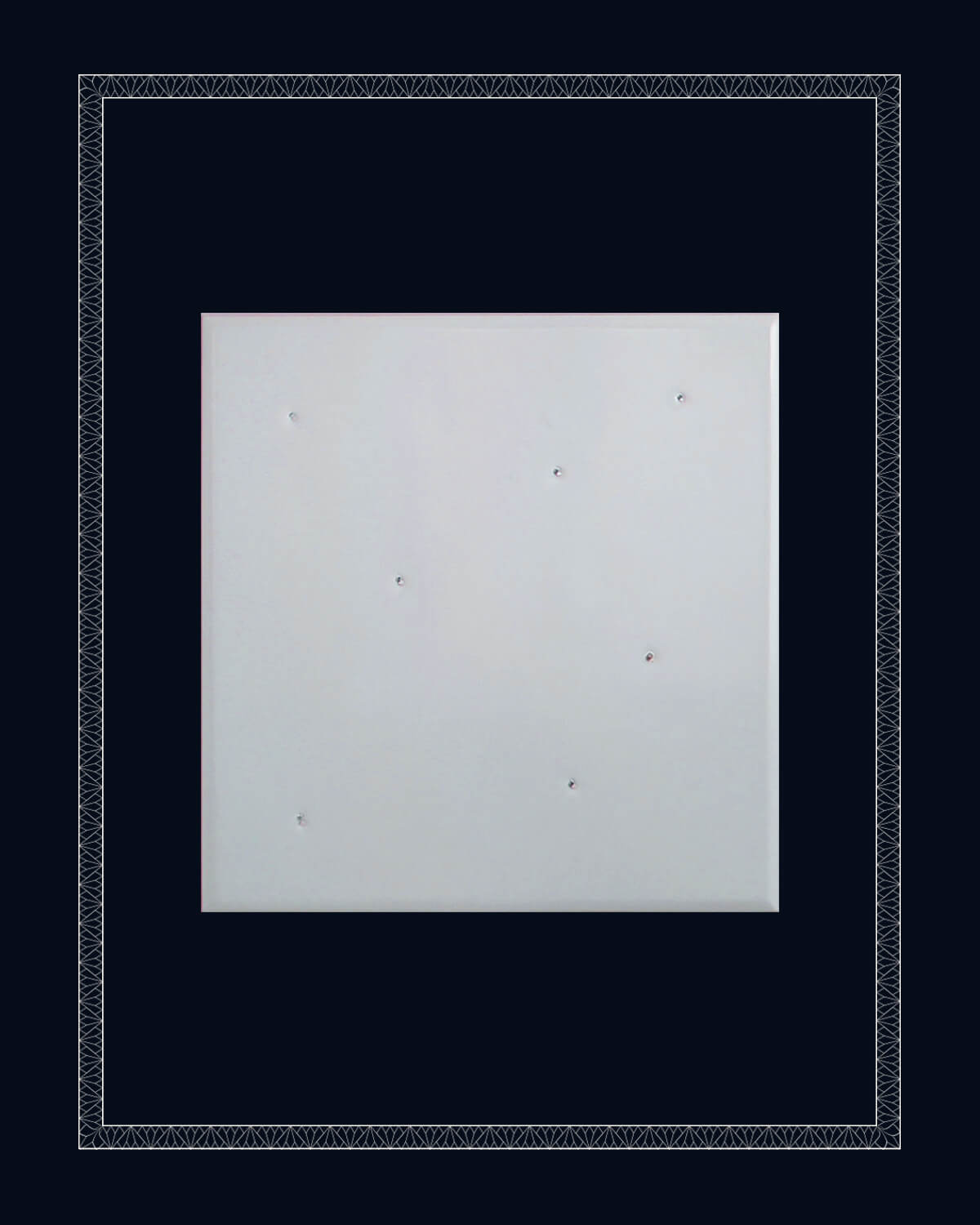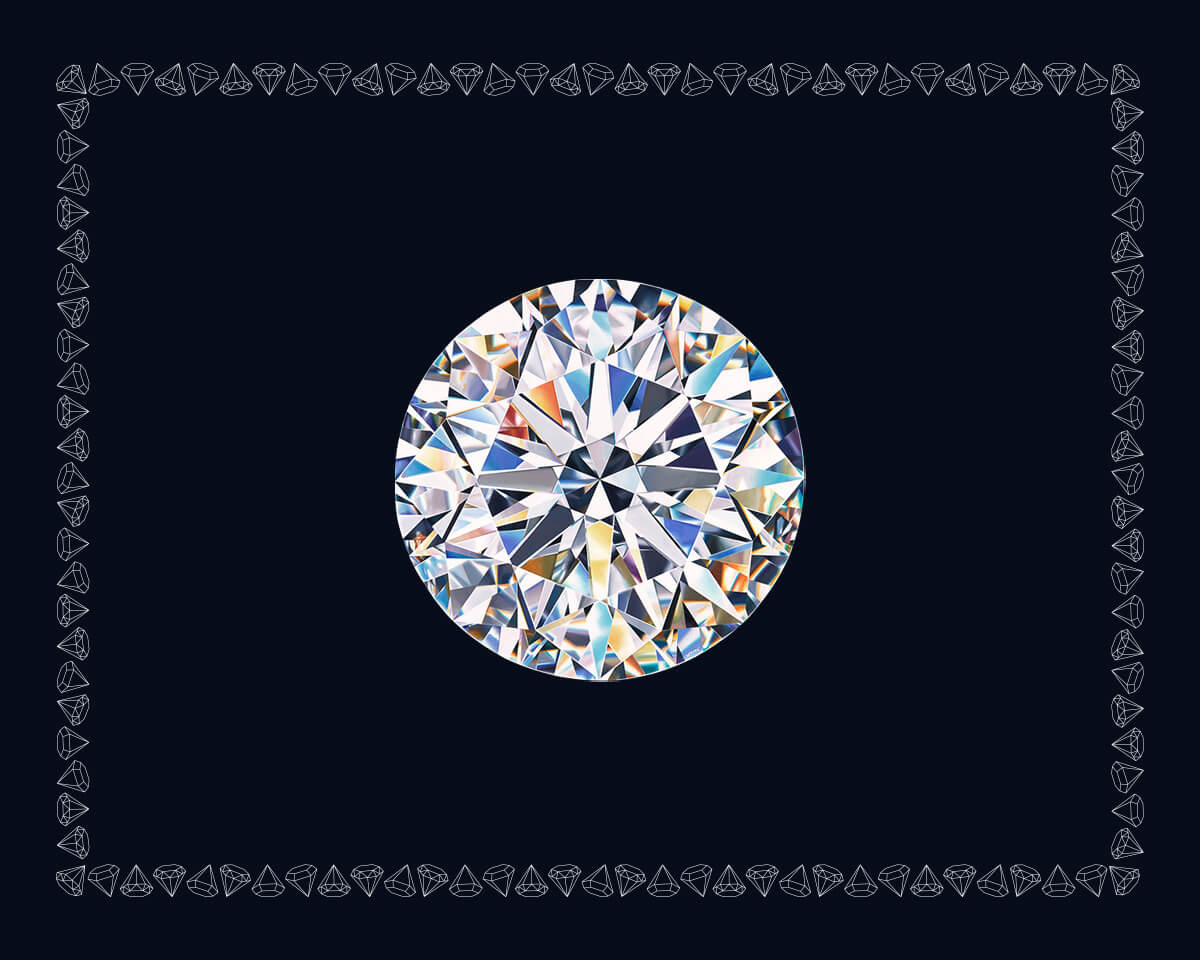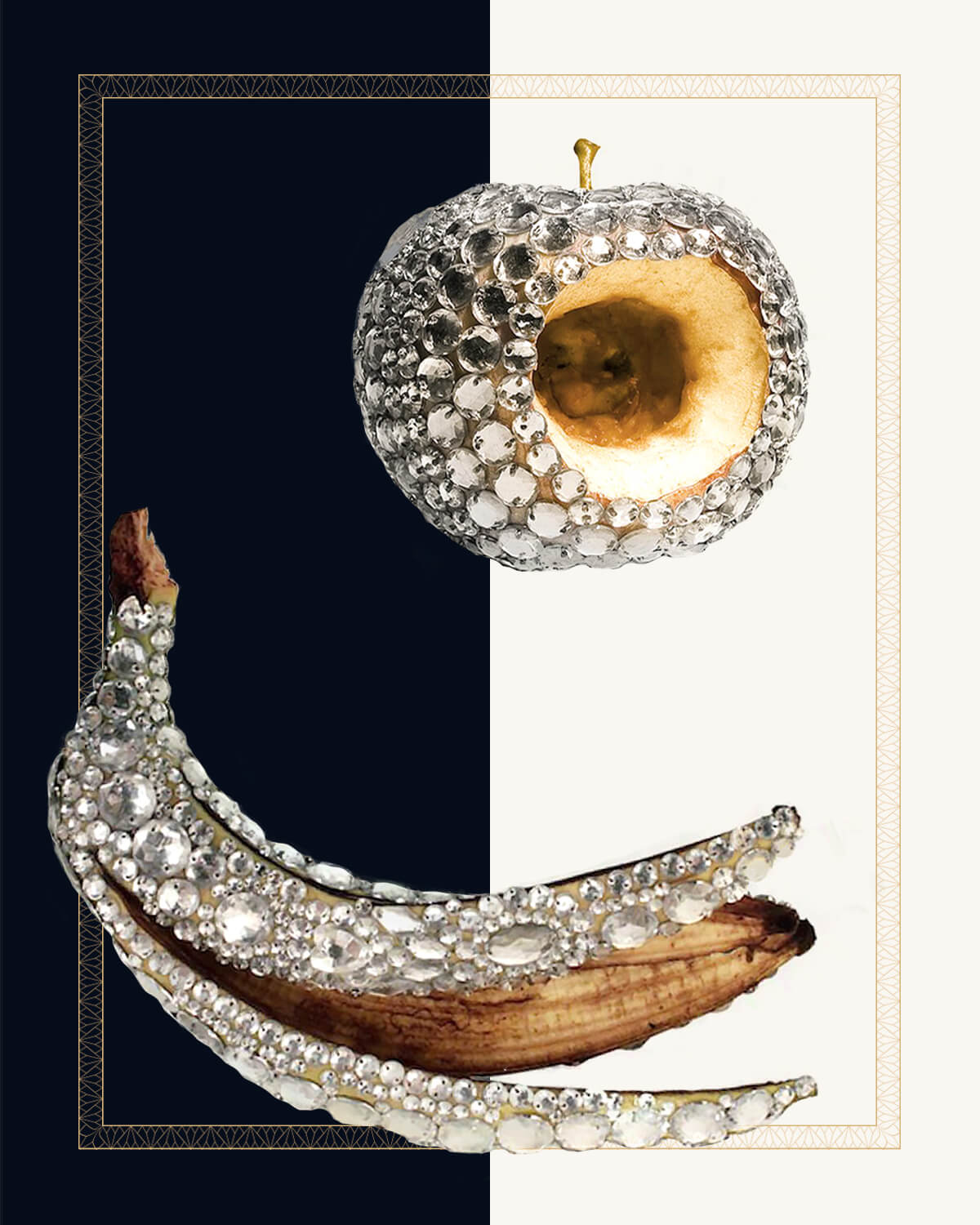The Art of Diamonds
Diamonds have been portrayed throughout history in unexpected ways. And they continue to find new expressions through contemporary art.

From ancient murals on cave walls to watercolour miniatures and oil portraits, and eventually an almost transgressional representation by contemporary artists, natural diamonds have long played a starring role in art. The rarity of natural diamonds effortlessly give them an aspirational value, inspiring many to create based on their beauty. Diamonds have been woven into India’s history through thousands of years, creating and maintaining a reputation of being symbols of wealth, beauty and power. They are resplendent in paintings and sculptures that date back centuries, showing an unparalleled reverence for the stone and today, in new contemporary works.
2000-year-old dazzle of diamonds
The exquisite paintings in the caves of Ajanta are among the few surviving relics from approximately 2,000 years ago that depict bejewelled maidens, princesses, and apsaras (celestial beings). Many of the paintings are of the Buddha’s previous avatar as a prince, surrounded by royal trappings, including crowns and a multitude of jewels. The paintings seamlessly move into depictions of Buddhist monks in various stages of attaining enlightenment, their colourful haloes defying the colours of the jewels worn by the sensuous apsaras they share mural space with. For example, in one cave a flying apsara wears a necklace of diamonds and sapphires, while other figures sport spinels, chrysoberyl’s cat’s eyes and blood red rubies.

Image: Apsara at Ajanta Cave No. 17, Jean-Pierre Dalbéra via Ancient History Encyclopedia
Southern charm and bejewelled paintings
Further down south, the city of Thanjavur (Tanjore), during the Chola dynasty in the 11th and 12th centuries produced some of the most detailed Thanjavur paintings—simple composition of Hindu gods and goddesses, in rich colours and embellished with gold foil and precious or semi-precious stones, made on stretched canvas on wooden planks.
There are also instances where the subjects have been Jain, Sikh, Muslim, other religious and even secular topics. Eminent artist Raja Ravi Verma combined Eastern (the style of Thanjavur paintings) and Western influences to create his signature portraits, including those of various royals in their finery—diamonds and other precious stones in indirect focus.
The art of fine portraiture
It was the Mughals who perfected the art of portraiture, with intricate detailing and vivid colours. Their invasion resulted in some of India’s most prized art and architecture. Among these are the miniature paintings that are created with watercolours made from pigments derived from natural minerals. These depict different royals, and even common folk, including courtesans made up to look like queens, resplendent in pearls, gold and precious stones, including diamond jewellery. Mined diamonds were used in portrait paintings as well, not just painted. These natural diamonds were called lasques, and are said to be the earliest examples of cut diamonds. They were cut in a way to cover miniature paintings and were therefore extremely flat, making them ill-suited for future reshaping or cutting. Their unique shape therefore became rare historical markers. One of the finest examples is of a portrait of Shah Jahan holding a turban ornament, from 1616.

Image: Shah Jahan, Hasan, Abu’l Nadiru’l Zaman, 1616 via © Victoria and Albert Museum, London
The most famous use of the diamond was on Shah Jahan’s Peacock Throne whose piece de resistance was the epic diamond, the Koh-i-noor, one of the world’s largest diamonds.
The legacy of the maharanis
It was the maharajas and maharanis who built India’s legacy of natural diamonds and diamond jewellery trends. Their portraits are almost like a registry of the world’s most famous, lavish jewels, the largest most decadent diamonds. They commissioned pieces from coveted jewellery makers and designers across Europe, to be made from stones mined in India. And their oil portraits were symbols of power and wealth. They were usually shown wearing Benarasi brocades or the finest silks, with cascading strings of diamonds, rubies, emeralds and other precious stones.

Image: Maharani Shrimant Akhand Sahib Soubhagyavati Sanyogita Bai Holkar, 1929, © Bernard Boutet de Monvel via Wikicommons
Contemporary art and diamonds
Art has not only mirrored but questioned humanity and society. And as artists moved from portraiture to a wider perspective, they started questioning the world while painting it. And it was the contemporary artists from the 20th century who took on the diamond and gave it an additional dimension.
The role of diamonds in contemporary art has been immortalised through British artist Damien Hirst’s 2007 piece, ‘For the Love of God’. A platinum cast of a skull is embellished with 8,601 diamonds, including a pear-shaped pink diamond located in the forehead. As a statement it forces viewers to contemplate death, its constant presence amongst us, and humanity’s mortality through a dazzling yet macabre display (the skull also sports a full set of real human teeth, and the original skull is said to be of a man in his mid thirties from the 18th century).

In contemporary Indian art, ceramicist Lubna Chowdhury’s latest exhibition Code Switch (2021) evokes the diamond pattern. The artist is particularly known for her work with sculptural shapes, and ‘Switch (Series 1-Number 2)’ is a vibrant but controlled explosion of colour repeatedly meditating on the typical shape of a diamond.
“Art has not only mirrored but questioned humanity and society. And as artists moved from portraiture to a wider perspective, they started questioning the world while painting it. And it was the contemporary artists from the 20th century who took on the diamond and gave it an additional dimension.”
Another contemporary artist is Prem Sahib, whose first exhibition in India at Jhaveri Contemporary in 2014, was a study of abstract minimalism using ‘diamonds’. The piece ‘Your Shine’ is a gigantic tile embedded with artificial diamonds. The duality of something as mundane and commonplace as a tile inset with the luxurious shine of diamonds invites viewers to consider the ordinary and the extraordinary at the same time.

Image: Jhaveri Contemporary Gallery, Mumbai.

Image: Jhaveri Contemporary Gallery, Mumbai.
On the other hand, artist Reena Ahluwalia’s interpretation of diamonds is hyper realistic, giving diamond design new meaning. Her paintings are magnified versions of the precious stones, their facets and cuts highlighted in vivid colours and details. “In my paintings diamonds are carriers of stories and personal meaning,” explains Ahluwalia. “They are symbolic and truly magical. I paint diamonds to celebrate nature and our shining human spirit. I feel we all are like diamonds. We are resilient, diverse, come in all colors, brilliant, full of potential and light. When looking at my paintings, I hope viewers feel that energy, positivity, hope and joy—all I believe to be attributes of diamonds.”
“What distinguishes a diamond from any other natural material is its enduring human connection—deeply symbolic and spiritual. It’s her take on celebrating the individuality of humanity, each person’s particular trait reflected in the unique makeup of a singular natural diamond.”

Portrait of Perfection, 60″ x 48″, 2016. Image: © Reena Ahluwalia

On the other hand Argentine artist Luciana Rondolini uses diamonds to coat rotting fruit to create symbols of memento mori, to mark the inevitable passage of time and the frailty of all living things within the passage. The response to her work is complicated—viewers are attracted to the stunning diamond encrusted piece in question, only to be repulsed by the strong odour of rotting fruit. The contrasting duality is perfectly symbolic of life and the way we live—we can indulge in society and its faults while also being critical of it. She also created pop culture icons as graffiti covered in diamonds.

Image: Rotten fruits studded with jewels © Luciana Rondolini via artist’s website.
It is Brazilian artist Vik Muniz who has perfected and popularised the latter—portraits of pop culture icons, but made entirely with diamonds, giving new meaning to celebrity diamond jewellery. The monochrome images are painstakingly created almost as diamond mosaics. The ones that stand out are predictably that of Marilyn Monroe and Elizabeth Taylor, two women who immortalised diamonds in movies and beyond. Now it is their turn to be eternally preserved in their most glamorous diva form, their portraits encrusted in diamonds.

Diamonds have been a witness to the way the world has changed over millennia. From being recorded in ancient texts as stones of power, they were cast as symbols of ethereal beauty, the exclusive accessories of celestial beings and then royalty. And it is art that has documented their allegorical role. Vibrant murals on cave walls morphed to intricate watercolour paintings, and eventually ironic takes on pop culture, society and humanity. In India, as she awoke to new rulers every few centuries, her diamonds recorded the transition of power—their journey chronicled through paintings and sculptures. And today, it is both the world’s and India’s natural diamonds that have seen vast passages of time, with numerous pieces of art recounting their tales, making a unique mark on the 21st century.